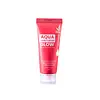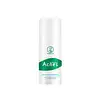What's inside
What's inside
 Key Ingredients
Key Ingredients

 Benefits
Benefits

 Concerns
Concerns

 Ingredients Side-by-side
Ingredients Side-by-side

Rubus Fruticosus Fruit Extract
AstringentRubus Idaeus Fruit Extract
AstringentFragaria Chiloensis Fruit Extract
Skin ConditioningVaccinium Angustifolium Fruit Extract
Skin ProtectingVaccinium Macrocarpon Fruit Extract
AstringentRibes Nigrum Fruit Extract
AstringentEuterpe Oleracea Fruit Extract
Morus Nigra Fruit Extract
Skin ConditioningVaccinium Myrtillus Fruit Extract
Skin ConditioningLycium Chinense Fruit Extract
AntioxidantCyclopentasiloxane
EmollientGlycerin
HumectantPEG-10 Dimethicone/Vinyl Dimethicone Crosspolymer
StabilisingCyclohexasiloxane
EmollientNiacinamide
SmoothingMagnesium Sulfate
Sodium Hyaluronate
HumectantAnanas Sativus Fruit Water
Skin ConditioningAnanas Sativus Fruit Extract
Skin ConditioningAnanas Sativus Fruit Juice
Skin ConditioningAscorbyl Tetraisopalmitate
AntioxidantAllantoin
Skin ConditioningEthylhexyl Methoxycinnamate
UV AbsorberButylene Glycol
HumectantPanthenol
Skin ConditioningTocopheryl Acetate
AntioxidantDimethiconol
EmollientPhenoxyethanol
PreservativeChlorphenesin
AntimicrobialCI 16035
Cosmetic ColorantParfum
MaskingRubus Fruticosus Fruit Extract, Rubus Idaeus Fruit Extract, Fragaria Chiloensis Fruit Extract, Vaccinium Angustifolium Fruit Extract, Vaccinium Macrocarpon Fruit Extract, Ribes Nigrum Fruit Extract, Euterpe Oleracea Fruit Extract, Morus Nigra Fruit Extract, Vaccinium Myrtillus Fruit Extract, Lycium Chinense Fruit Extract, Cyclopentasiloxane, Glycerin, PEG-10 Dimethicone/Vinyl Dimethicone Crosspolymer, Cyclohexasiloxane, Niacinamide, Magnesium Sulfate, Sodium Hyaluronate, Ananas Sativus Fruit Water, Ananas Sativus Fruit Extract, Ananas Sativus Fruit Juice, Ascorbyl Tetraisopalmitate, Allantoin, Ethylhexyl Methoxycinnamate, Butylene Glycol, Panthenol, Tocopheryl Acetate, Dimethiconol, Phenoxyethanol, Chlorphenesin, CI 16035, Parfum
Water
Skin ConditioningHydrogenated Polyisobutene
EmollientDicaprylyl Carbonate
EmollientButylene Glycol
HumectantPolysorbate 60
EmulsifyingDimethicone
EmollientAmmonium Acryloyldimethyltaurate/Vp Copolymer
Silica
AbrasiveGlyceryl Stearate Citrate
EmollientGlyceryl Acrylate/Acrylic Acid Copolymer
HumectantDimethiconol
EmollientGlycerin
HumectantMethylparaben
PreservativeSorbitol
HumectantO-Cymen-5-Ol
AntimicrobialBetaine
HumectantDisodium EDTA
Propylene Glycol
HumectantChondrus Crispus Extract
Skin ConditioningButyl Avocadate
Skin ConditioningArginine
MaskingParfum
MaskingPropylparaben
PreservativeAlcohol
AntimicrobialPvm/Ma Copolymer
Emulsion StabilisingPhenoxyethanol
PreservativeCentella Asiatica Extract
CleansingAloe Barbadensis Leaf Juice
Skin ConditioningLecithin
EmollientPrunus Cerasus Extract
AntioxidantPyrus Malus Juice
Skin ConditioningChlorphenesin
AntimicrobialOpuntia Streptacantha Stem Extract
HumectantSalicylic Acid
MaskingBeta-Glucan
Skin ConditioningCitric Acid
BufferingAmylopectin
Satureja Hortensis Extract
MaskingDextrin
AbsorbentSodium Benzoate
MaskingPotassium Sorbate
PreservativeXanthan Gum
EmulsifyingSodium Dehydroacetate
PreservativeChamomilla Recutita Flower Extract
MaskingAsiaticoside
AntioxidantMadecassic Acid
Skin ConditioningAsiatic Acid
Skin ConditioningEthylhexylglycerin
Skin ConditioningWater, Hydrogenated Polyisobutene, Dicaprylyl Carbonate, Butylene Glycol, Polysorbate 60, Dimethicone, Ammonium Acryloyldimethyltaurate/Vp Copolymer, Silica, Glyceryl Stearate Citrate, Glyceryl Acrylate/Acrylic Acid Copolymer, Dimethiconol, Glycerin, Methylparaben, Sorbitol, O-Cymen-5-Ol, Betaine, Disodium EDTA, Propylene Glycol, Chondrus Crispus Extract, Butyl Avocadate, Arginine, Parfum, Propylparaben, Alcohol, Pvm/Ma Copolymer, Phenoxyethanol, Centella Asiatica Extract, Aloe Barbadensis Leaf Juice, Lecithin, Prunus Cerasus Extract, Pyrus Malus Juice, Chlorphenesin, Opuntia Streptacantha Stem Extract, Salicylic Acid, Beta-Glucan, Citric Acid, Amylopectin, Satureja Hortensis Extract, Dextrin, Sodium Benzoate, Potassium Sorbate, Xanthan Gum, Sodium Dehydroacetate, Chamomilla Recutita Flower Extract, Asiaticoside, Madecassic Acid, Asiatic Acid, Ethylhexylglycerin
 Reviews
Reviews

Ingredients Explained
These ingredients are found in both products.
Ingredients higher up in an ingredient list are typically present in a larger amount.
Butylene Glycol (or BG) is used within cosmetic products for a few different reasons:
Overall, Butylene Glycol is a safe and well-rounded ingredient that works well with other ingredients.
Though this ingredient works well with most skin types, some people with sensitive skin may experience a reaction such as allergic rashes, closed comedones, or itchiness.
Learn more about Butylene GlycolChlorphenesin is a synthetic preservative. It helps protect a product against bacteria in order to extend shelf life. In most cases, Chlorphenesin is paired with other preservatives such as phenoxyethanol and caprylyl glycol.
Chlorphenesin is a biocide. This means it is able to help fight the microorganisms on our skin. It is also able to fight odor-releasing bacteria.
Chlorphenesin is soluble in both water and glycerin.
Studies show Chlorphenesin is easily absorbed by our skin. You should speak with a skincare professional if you have concerns about using Chlorphenesin.
Learn more about ChlorphenesinDimethiconol is a silicone that resembles the popular dimethicone. Like other silicones, it is an emollient. Emollients create a thin film on skin to prevent moisture from escaping.
This ingredient helps to create a silky texture and improve spreadability. Due to its high molecular weight and thickness, it is often combined with cyclopentasiloxane.
Glycerin is already naturally found in your skin. It helps moisturize and protect your skin.
A study from 2016 found glycerin to be more effective as a humectant than AHAs and hyaluronic acid.
As a humectant, it helps the skin stay hydrated by pulling moisture to your skin. The low molecular weight of glycerin allows it to pull moisture into the deeper layers of your skin.
Hydrated skin improves your skin barrier; Your skin barrier helps protect against irritants and bacteria.
Glycerin has also been found to have antimicrobial and antiviral properties. Due to these properties, glycerin is often used in wound and burn treatments.
In cosmetics, glycerin is usually derived from plants such as soybean or palm. However, it can also be sourced from animals, such as tallow or animal fat.
This ingredient is organic, colorless, odorless, and non-toxic.
Glycerin is the name for this ingredient in American English. British English uses Glycerol/Glycerine.
Learn more about GlycerinParfum is a catch-all term for an ingredient or more that is used to give a scent to products.
Also called "fragrance", this ingredient can be a blend of hundreds of chemicals or plant oils. This means every product with "fragrance" or "parfum" in the ingredients list is a different mixture.
For instance, Habanolide is a proprietary trade name for a specific aroma chemical. When used as a fragrance ingredient in cosmetics, most aroma chemicals fall under the broad labeling category of “FRAGRANCE” or “PARFUM” according to EU and US regulations.
The term 'parfum' or 'fragrance' is not regulated in many countries. In many cases, it is up to the brand to define this term.
For instance, many brands choose to label themselves as "fragrance-free" because they are not using synthetic fragrances. However, their products may still contain ingredients such as essential oils that are considered a fragrance by INCI standards.
One example is Calendula flower extract. Calendula is an essential oil that still imparts a scent or 'fragrance'.
Depending on the blend, the ingredients in the mixture can cause allergies and sensitivities on the skin. Some ingredients that are known EU allergens include linalool and citronellol.
Parfum can also be used to mask or cover an unpleasant scent.
The bottom line is: not all fragrances/parfum/ingredients are created equally. If you are worried about fragrances, we recommend taking a closer look at an ingredient. And of course, we always recommend speaking with a professional.
Learn more about ParfumPhenoxyethanol is a preservative that has germicide, antimicrobial, and aromatic properties. Studies show that phenoxyethanol can prevent microbial growth. By itself, it has a scent that is similar to that of a rose.
It's often used in formulations along with Caprylyl Glycol to preserve the shelf life of products.